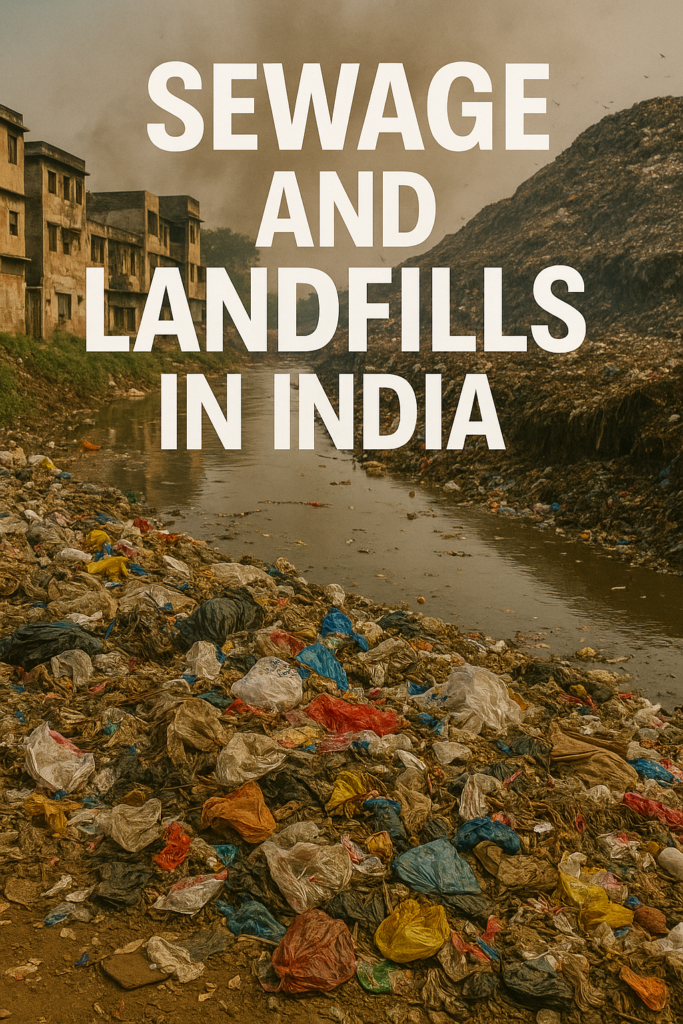Sewage and Landfills: Why They’re Still a Major Issue in India
Sewage and landfills in India remain a significant challenge despite multiple initiatives and policies. While urbanization and economic growth have surged, the management of waste and wastewater has lagged behind, posing severe environmental, health, and infrastructural risks. This blog delves into why sewage and landfill problems still persist and what steps can be taken for long-term solutions.
1. Rapid Urbanization Without Infrastructure Support
India’s urban population has grown exponentially, leading to massive pressure on civic infrastructure:
- Many cities lack centralized sewage treatment plants (STPs) or operate them at limited capacity.
- Informal settlements often discharge untreated waste directly into rivers and lakes.
- Municipal corporations are underfunded and understaffed for modern waste management systems.
2. Outdated and Inadequate Sewage Systems
The sewage network in most Indian cities was built decades ago and fails to meet today’s demands:
- Over 60% of sewage generated in India is discharged untreated into water bodies.
- Old pipes frequently burst or clog, creating health hazards and water contamination.
- Low-income areas often lack sewage connections altogether.
3. Landfills Overflowing with Unsegregated Waste
Landfills across India are overburdened and poorly maintained:
- Popular sites like Ghazipur (Delhi), Deonar (Mumbai), and Perungudi (Chennai) are beyond capacity.
- Unsegregated dumping leads to fires, leachate pollution, and greenhouse gas emissions.
- Recyclables and organics get buried instead of being reused or composted.
4. Public Apathy and Lack of Awareness
Citizens play a crucial role, but many are unaware or indifferent to waste segregation and sanitation norms:
- Only a fraction of households separate dry and wet waste.
- Open defecation and improper toilet usage still occur in rural and peri-urban areas.
- Little awareness exists about the environmental consequences of poor waste habits.
5. Policy Gaps and Poor Implementation
While India has numerous waste and sewage-related policies, implementation is inconsistent:
- Swachh Bharat Mission focuses more on toilets and less on sewage treatment.
- Solid Waste Management Rules 2016 are poorly enforced at local levels.
- Corruption and red tape delay infrastructure projects.
What Can Be Done?
Solving the sewage and landfill crisis in India requires a multi-pronged approach:
- Build and upgrade STPs with modern technology and decentralized systems for smaller towns.
- Mandate source segregation at all levels—households, industries, and institutions.
- Invest in waste-to-energy plants and composting facilities.
- Launch mass awareness campaigns with school curriculums, digital media, and community engagement.
- Strengthen the ULBs (Urban Local Bodies) with funds, staff, and accountability mechanisms.
Conclusion
Sewage and landfills in India continue to be environmental and public health threats, even in 2025. With integrated policies, responsible citizens, and modern technology, India can move towards a cleaner, greener future. The time to act is now—not just for the sake of urban development, but for the health of future generations.



